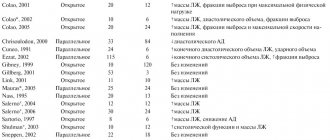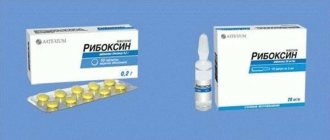The appearance of pain indicates disturbances in the functioning of the body. We are talking about pathologies. The most common problem is discomfort in the heart area. They can be pulling, cutting, blunt or sharp. They have different intensity and duration. In some cases, the pain radiates to the arm or head. Then the problems are associated with neighboring organs of the human body.
What causes pain in the area of the heart and left shoulder blade? How to get rid of poor health, and which specialist should I contact? At the KDS Clinic, medical workers will conduct examinations, diagnose the disease even at an early stage and prescribe effective treatment.
In addition to pain in the heart area and under the shoulder blade, the patient experiences a number of other symptoms. These include dizziness, chronic fatigue, nausea and vomiting, migraines, and gastrointestinal disorders. It is extremely important to contact a medical facility on time. Ignoring pain leads to the development of the disease and deterioration of the condition. The treatment started will normalize the functionality of the body and prevent the development of the disease.
To keep your heart beating correctly
The heart is the “motor” that forces our body to work without days off or breaks. It is not surprising that it is this organ that often needs routine, or even major, “repairs”. Well-known Samara cardiologist Mikhail Kachkovsky spoke to the press about the risks of heart disease and how to avoid them.
— Heart disease is dangerous because it is one of the main causes of mortality in the population. Moreover, if every fourth person in the world dies from these diseases, in Russia every second person dies,” Mikhail Arkadyevich voiced the sad statistics.
If the pressure is not like that of an astronaut
— When I try to sleep on my left side, my heart starts to work like a hammer drill - at first I even thought that the neighbors below were crushing the wall. What could it be?
- The description looks like tachycardia or palpitations with an enlarged left ventricle. It is necessary to be examined to determine the exact cause and correct the functioning of the heart. This in itself is not dangerous, but can lead to heart failure and other complications. That is why, in case of hypertension, it is necessary to promptly normalize high blood pressure so that the heart does not increase in size and its functionality is not impaired.
— Please tell me how to protect yourself from heart disease? What examinations need to be completed?
— You need to start by measuring your blood pressure at home. If you feel pain behind the sternum or in the heart area, you need to consult a doctor and get an ECG. You should check a biochemical blood test - cholesterol and its fractions - to see if there is an indirect threat of coronary disease, the cause of which may be atherosclerosis. For a more detailed examination of the heart, the use of echocardiography is effective, allowing you to check the structure of the heart, valve function, contractility and other parameters. Modern methods include CT coronary angiography, which determines the degree of blood flow disturbance. There are methods of functional diagnostics that can be intermediate - the first manifestations of disorders can be checked using stress tests - for example, bicycle ergometry or treadmill, 24-hour ECG monitoring.
— When should you start monitoring your blood pressure?
- If there is evidence, then from childhood. But even if there are no problems, you should undergo an annual medical examination. As a rule, problems begin between the ages of 40 and 45 for men, and after 55 for women. At this age, you need to begin to control the situation - regularly measure your blood pressure. But this does not mean that you cannot get a myocardial infarction in your youth. For example, the risk of developing myocardial infarction in young women is high when two factors are combined - smoking and taking hormonal contraceptives. In addition, early heart attacks and strokes can be a consequence of genetic predisposition, that is, hereditary.
— Everyone knows that smoking is bad for the heart. What can you say about electronic cigarettes?
— Less information has been accumulated on electronic cigarettes, but the trend is the same - atherosclerosis and hypertension develop more often. Among smokers, the mortality rate from cardiovascular diseases is twice as high.
— I am 79 years old and have atrial fibrillation. I’ve been taking three medications for three years, but to no avail...
- You are receiving good treatment. Atrial fibrillation or atrial fibrillation leads to dangerous complications - thrombosis and strokes. The fact that these diseases did not develop is precisely a consequence of three years of use of these drugs. Since you have had atrial fibrillation for more than three years, it is permanent. In this situation, you need to achieve a normal heart rate so that the heart rate is 60 - 70 beats per minute. If, with the help of the prescribed medication, you manage to achieve these numbers, then good, the treatment is correct.
— I wore a holter* for a day, which showed 8568 ventricular extrasystoles. Please tell me what this indicator says?
- You have more extrasystoles than a healthy person should have. This may be due to emotional stress, as well as functional heart diseases. You definitely need to see a cardiologist to determine the exact cause. If the indicator persists, shortness of breath and other ailments may subsequently appear. To make an appointment with me or other doctors at the REAVIZ clinic, call (846) 321-21-21.
Causes of pain
Pancreatitis
Inflammation of the pancreas is the most common factor causing pain on the left side under the ribs. A number of reasons can cause inflammation of an organ:
- alcohol abuse;
- binge eating;
- cholelithiasis;
- viral lesions;
- injuries of the upper floor of the abdominal cavity;
- Helicobacter pylori infection;
- complications after operations and manipulations (endoscopy).
An attack of pancreatitis is characterized by severe pain under the left rib, radiating to the back and shoulder. Often people complain of a sharp girdling pain, combined with uncontrollable vomiting.
With chronic inflammation, the pain syndrome has a dull, aching character, intensifying against the background of physical activity, overeating, alcohol abuse or excessive consumption of fresh fruit. This form of the disease is a logical continuation of untreated acute pancreatitis.
Relief of pain in acute pancreatitis consists of therapy aimed at eliminating its cause - inflammation of the pancreas. In addition, for symptomatic purposes, analgesics are prescribed and novocaine blockades are carried out. The introduction of a local anesthetic to the organ bed in the acute phase of the inflammatory process significantly relieves its painful manifestations.
Intercostal neuralgia
Osteochondrosis, herniated intervertebral discs, and compression fractures of the vertebrae due to osteoporosis often serve as a trigger for sharp pain in the left hypochondrium. Unpleasant stabbing sensations begin behind the spine with a sudden attack. The mechanism of this pathology is compression of the intercostal nerves by the structures of the spinal column. Neuralgia can simulate some diseases of the abdominal organs. Its distinctive features:
- sharp pain under the left rib behind, starting from the vertebrae;
- the beginning is associated with a sudden movement;
- the pain worsens when turning or simply bending the body;
- may disappear when stationary;
- there are no dyspeptic symptoms (nausea, vomiting, bloating, changes in stool character).
Another feature of the pain syndrome is its rapid relief after an injection of an anti-inflammatory drug (diclofenac, dicloberl) or a manual therapy session. In the absence of proper care and elimination of the cause, attacks of neuralgia recur periodically.
Peptic ulcer
Aching pain under the left rib in the front is provoked by a stomach or duodenal ulcer. It is localized below the xiphoid process or, popularly, “in the pit of the stomach.” There is a clear connection with food, thanks to which the presumptive localization of the ulcerative defect is established:
- pain immediately after eating corresponds to an ulcer of the entrance (cardiac) section and body of the organ;
- symptoms appear a few hours later with an ulcer of the exiting section;
- night pain is predominant for a defect in the duodenal mucosa.
In addition, peptic ulcer disease is characterized by dyspeptic symptoms. Similar symptoms and aching pain under the left rib can also be observed with a diaphragmatic hernia. A distinctive feature of a hernia is early vomiting after eating, which brings relief. It is also characterized by a specific symptom - lying down immediately after eating causes regurgitation of gastric juice into the esophagus, manifested by an unbearable sour taste in the mouth.
The pain of a peptic ulcer disappears or is significantly reduced by diet and taking medications that reduce acidity.
Injury
The lateral walls of the abdomen and chest are rich in nerve endings, which, if traumatically damaged, cause pain. After a rib fracture, it persists for several months. It is relieved after taking analgesics and local anti-inflammatory compresses.
The main danger of injury to the left costal arch is not considered to be a fracture of the ribs, but damage to the internal organs. The etiology of severe pain under the left rib may be a rupture of the spleen - a condition that threatens massive intra-abdominal hemorrhage.
When an organ ruptures, pain radiates to the lower abdominal wall, where blood flows, and the left shoulder, which is associated with irritation of the fibers of the phrenic nerve. There is also a specific sign for this injury. When a person tries to lie down, the pain in the abdomen and shoulder increases sharply, causing him to quickly get up. In the medical literature, this is called the “vanka-vstanka” symptom.
A splenic rupture is a serious condition that requires immediate surgical intervention. In most cases, the essence of the operation is the complete removal of an organ that no longer performs vital functions in adults. In extremely rare cases, when the patient’s condition is stable and the degree of organ destruction is insignificant, it is possible to perform organ-saving surgery.
Heart diseases
Dull pain under the left rib is a manifestation of angina pectoris and myocardial infarction, when delay and incorrect diagnosis have a poor prognosis. Treatment of pancreatitis, neuralgia or ulcers during an acute heart attack is worse than absolute inactivity. It is advisable to remember the symptoms accompanying the abdominal form of myocardial infarction:
- chest pain;
- numbness of the left hand;
- dyspnea;
- cardiopalmus;
- pallor.
For these symptoms, an electrocardiogram should be the leading diagnostic procedure, without which treatment cannot be started. Pain relief for a heart attack involves the administration of narcotic analgesics and the use of nitroglycerin tablets. If this diagnosis is suspected, an ambulance should be called immediately.
Pneumonia and pleurisy
Inflammation of the lung or pleura covering this organ is a potential cause of pain in the area of the left costal arch. The stabbing pain intensifies with deep inhalation and finger pressure on the intercostal spaces. These diseases occur against the background of a cold and, in addition to pain, are accompanied by a number of symptoms:
- febrile temperature;
- dyspnea;
- dry cough;
- lag of the left half of the chest in the act of breathing;
- smoothing of intercostal spaces.
Pain relief occurs virtually independently after the start of treatment for the underlying problem. For this purpose, antibacterial drugs, anti-inflammatory, antitussive and expectorant drugs are used. In cases of exudative pleurisy, when fluid accumulates in the pleural cavity, it may be necessary to perform puncture and aspiration of inflammatory exudate.
Colon diseases
On the left in the hypochondrium is the splenic angle of the colon. When it is inflamed, torsion, or a tumor, pain may occur in this area. It is often accompanied by some of the symptoms:
- pathological impurities in feces (mucus, blood, pus);
- diarrhea or constipation;
- bloating;
- increased gas formation;
- dyspepsia;
- absence of gas and stool.
Delay in such a case threatens surgical intervention. Therefore, if you have such symptoms, you should immediately go to the hospital. Pain syndrome in pathology of the colon is rarely the leading symptom, so it quickly stops after eliminating the root cause of the disease.
Renal colic
Stones or sand in the urinary tract are a likely cause of obstruction of the flow of urine into the bladder from the kidneys. In such situations, increased pressure occurs in the pelvis of the latter, the tissue and capsule of the organ stretches, and severe pain occurs. Acute piercing pain is predominantly localized under the ribs at the back. Such an attack is accompanied by a disturbance in the nature of urination in the form of retention, frequent urge or bloody urine. Patients are always restless, it is difficult for them to find a place or a comfortable position in which the attack would not be so pronounced.
Emergency care for renal colic involves administering a combination of various anti-inflammatory, analgesic and antispasmodic drugs. More often than not, the pain subsides after this. To prevent a recurrent attack, it is recommended to take a hot bath, place a heating pad on the painful area, or drink a small amount of strong alcohol. These activities lead to relaxation of the smooth muscles of the urinary tract, the passage of small stones and sand. Subsequently, the patient needs a mandatory scheduled consultation with a urologist to determine the tactics for further treatment of urolithiasis.
Shingles
The chickenpox virus, after the symptoms of the disease subside, does not leave the human body, but is sent to the ganglia of the spinal nerves, where it remains in an inactive state. In case of weakened immunity, hypothermia and other aggravating circumstances, the virus can be activated. But in these cases, it no longer causes chickenpox, but a disease called herpes zoster.
The clinical picture is characterized by burning pain spreading from the spine along the intercostal space. After a few days, small vesicles appear in this place, reminiscent of herpes rashes on the lips. Even later, the vesicles burst and wounds appear, causing a lot of inconvenience to the person. The pathology is characterized by malaise and low-grade fever.









